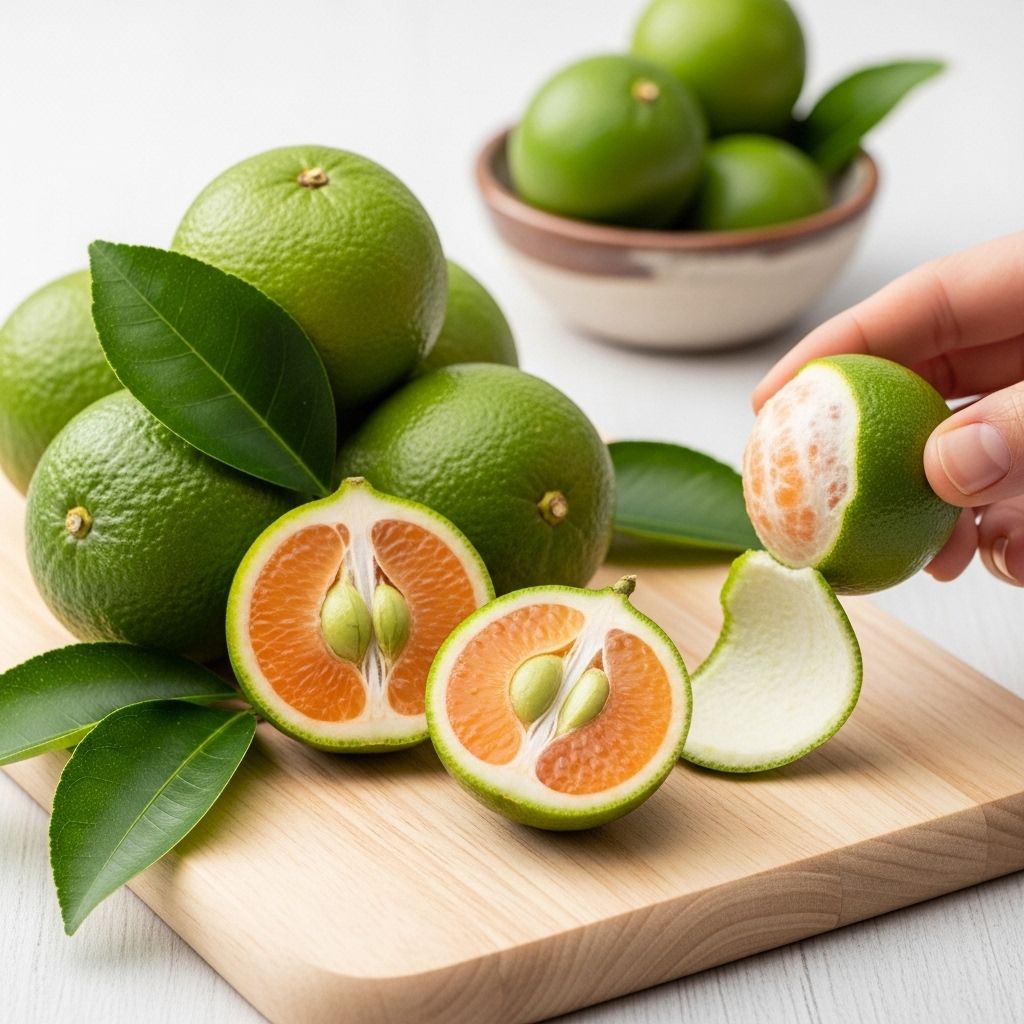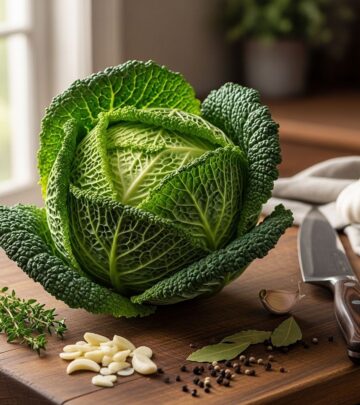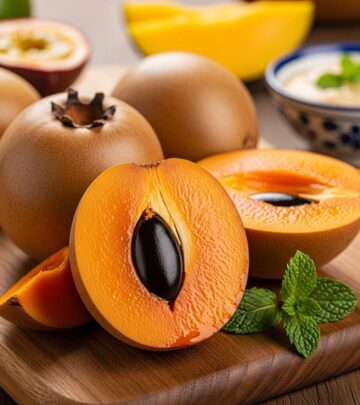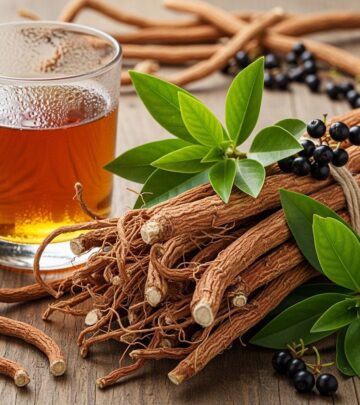Mamoncillo: Nutritional Value, Health Benefits, Culinary Uses & Recipes
Uncover how this vivacious fruit adds zesty flavor and health-boosting vitamins to meals.

Mamoncillo: The Tangy Tropical Fruit Packed With Nutrients
Mamoncillo, often called Spanish lime, is a small, green, non-citrus tropical fruit native to the Caribbean and Central America. Renowned for its unique tangy-sweet flavor profile and impressive nutritional content, mamoncillo has found its way into kitchens, gardens, and traditional wellness practices across the tropics. This article explores everything you need to know about mamoncillo – from health benefits and nutritional facts to culinary tips, growth advice, and easy recipes.
Key Takeaways
- Mamoncillos are small, green non-citrus fruits with a sweet-tart flavor similar to a blend of lychee and lime.
- They are rich in antioxidants, vitamins, fiber, and minerals, offering several health benefits.
- Mamoncillo is versatile in the kitchen, delicious eaten fresh, and featured in drinks, desserts, salsas, and preserves.
- The tree flourishes in warm, open environments and can be grown in tropical and subtropical climates.
Mamoncillo: Taste and Nutritional Value
Mamoncillo fruits are typically round to oval, about 3–4 cm in diameter, encased in a thin, leathery green skin. The pulp inside ranges from pale yellow to copper-orange and envelops a large, starchy seed. When unripe, the taste is distinctly tangy and astringent; when ripe, it becomes sweetly acidic with subtle starchiness. The unique blend of flavors draws comparisons to both lychee and lime.
The nutritional composition of mamoncillo is noteworthy. According to research and traditional uses, the main components include:
- Vitamin A: Important for vision and maintaining healthy organs.
- Vitamin C: Boosts immunity and acts as a powerful antioxidant.
- Dietary Fiber: Helps support digestive health.
- Phosphorus & Calcium: Essential minerals for bone health.
- Tryptophan: An amino acid aiding serotonin production, important for mood regulation.
- Phenolic Compounds: Antioxidants that may help modulate inflammation and oxidative stress.
The astringency and tartness of mamoncillo are attributed to its polyphenolic content, which have traditional medicinal value in the Caribbean, particularly for heart and digestive health.
Nutritional Value Table (per 100g, estimates)
| Nutrient | Amount |
|---|---|
| Vitamin A | 10% RDA |
| Vitamin C | 30% RDA |
| Fiber | 2g |
| Calcium | 15 mg |
| Phosphorus | 28 mg |
| Tryptophan | ~50 mg |
Values are approximate and may vary by region or variety.
Health Benefits of Mamoncillo
The traditional consumption of mamoncillo, both as a fresh snack and in local home remedies, has been linked to several potential health benefits:
- Antioxidant Activity: The fruit is rich in phenolic compounds and vitamin C, which combat oxidative stress and may help lower the risk of chronic diseases.
- Digestive Health: The fiber and astringent polyphenols may alleviate mild digestive complaints, such as diarrhea or indigestion.
- Cardiovascular Support: Traditional uses in the Caribbean suggest benefits for blood pressure management, likely due to the fruit’s potassium and antioxidant profile.
- Mood Regulation: Tryptophan in mamoncillo is used by the body to produce serotonin, aiding in mood and sleep.
- Immune Support: Rich vitamin C content supports immune system defenses.
Culinary Uses of Mamoncillo
Mamoncillo is a versatile fruit used in both sweet and savory dishes, drinks, and preserves across regions where it grows. Below are the most popular culinary applications:
- Fresh Snack: Enjoyed raw after peeling the skin; the pulp is sucked off the seed.
- Salsas & Chutneys: Adds a tangy-sweet burst to savory condiments for meats or fish.
- Juices & Smoothies: Blends easily with water or other fruits to make zesty, refreshing beverages.
- Marinades & Dressings: Pulp or juice enhances salads and marinades with a tropical tang.
- Desserts: Used in fruit salads, sorbets, ice creams, and jams for a distinctive taste.
- Preserves: Can be turned into jams, jellies, or pickled as sweet-tart condiments.
- Cocktails: Soaked in rum with spices for unique Caribbean drinks.
Tip: Mamoncillo juice can stain fabrics, so use care during preparation and consumption.
How to Grow Mamoncillo
Growing a mamoncillo (Spanish lime) tree requires some care, but the rewards are substantial. Here’s what you need to know to cultivate this tropical fruit in your garden:
- Climate: Mamoncillo thrives in warm, subtropical to tropical climates. It is tolerant of drought but susceptible to frost and cannot survive cold winters.
- Size & Space: These trees can grow up to 85 feet tall, so plant in a large open area, away from tall structures and utility lines.
- Soil: Adaptable to most well-draining soils but grows best in fertile, sandy or loamy ground.
- Sunlight: Requires full sun for optimal fruiting.
- Watering: Young trees should be watered regularly for the first 4 years; mature trees are drought-tolerant.
- Propagation: It’s best to purchase a young sapling from a reputable nursery, as growing from seed may delay fruiting. Nursery trees can fruit in 4–5 years; seed-grown trees take about 8–10 years.
Trees bear well when left undisturbed and do not usually require heavy fertilization or pruning. Pick fruit when the skin has a firm, dark green hue, and the branches still look fresh and supple.
Popular Recipes Featuring Mamoncillo
While mamoncillo is most often enjoyed raw, it can be transformed into wonderful juices, preserved treats, and even cocktails. Below are two simple and authentic recipes:
1. Guinep (Mamoncillo) Juice
- Soak peeled mamoncillo fruits in water.
- Separate the soft pulp from the seeds by hand.
- Strain the mixture to collect the juice.
- Sweeten with sugar or honey to taste and serve chilled.
2. Kenep (Mamoncillo) Trempe (Rum-Soaked Mamoncillo)
This Caribbean drink is a festive favorite. Here’s how to make it:
- Ingredients:
- 1 Mason jar or large bottle (wide-mouth)
- Fresh mamoncillo fruits
- 1 cup (or more) white rum
- 1-2 cinnamon sticks
- 1-2 star anise
- Sugar to taste
- Lemon rind (optional)
- 1-2 vanilla beans (optional, for a different twist)
- Instructions:
- Wash and peel the mamoncillo fruits.
- Place the pulp and seeds in the jar.
- Add spices, sugar, and enough rum to completely submerge the fruits.
- Seal and shake gently.
- Let infuse for 2–3 days before serving. Serve over ice and enjoy.
Frequently Asked Questions (FAQs)
What is mamoncillo called in different countries?
Mamoncillo goes by various names, including quenepa (Puerto Rico), guinep (Jamaica), kenep (Haiti), limoncillo (Mexico), and Spanish lime in English-speaking regions.
What does mamoncillo taste like?
The fruit is tangy, sweet, and slightly astringent, mixing flavors reminiscent of lychee, lime, and sometimes a bit of coconut.
Is mamoncillo healthy?
Yes, mamoncillo is rich in vitamin C, vitamin A, fiber, and antioxidants, offering multiple health benefits, especially for immunity and digestion.
How do you eat mamoncillo?
Puncture or peel the leathery skin, pop the fruit in your mouth, and suck the juicy pulp off the large seed. Discard the seed after eating.
Can you eat mamoncillo seeds?
While the raw seeds are not typically consumed, they can be roasted and used in some traditional dishes as a starchy, nutty addition.
How do you store mamoncillo?
Unpeeled mamoncillo keeps for about a week in a cool, dark place. If already peeled, store in a sealed container in the refrigerator and consume within a few days.
Conclusion
Mamoncillo, or Spanish lime, is a vibrant, flavorful fruit offering both nutritional excellence and culinary delight. Whether enjoyed fresh as a tropical treat, brewed into refreshing drinks, or grown in your garden, mamoncillo is a fruit worth discovering. Its legacy in traditional Caribbean cultures underscores its value beyond just flavor, linking it to health, celebration, and local cuisine.
References
- https://specialtyproduce.com/produce/Mamoncillo_Spanish_Lime_9146.php
- https://www.stylecraze.com/articles/mamoncillo/
- https://www.stylecraze.com/author/varshapatnaik/
- https://www.writingwithmymouthfull.com/2007/07/20/summer-fruits-in-season-mamoncillo-quenepa-ginep/
- https://thatgirlcookshealthy.com/guinep-juice/
- https://www.cabidigitallibrary.org/doi/full/10.1079/cabicompendium.33184
Read full bio of Sneha Tete












